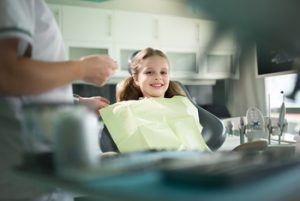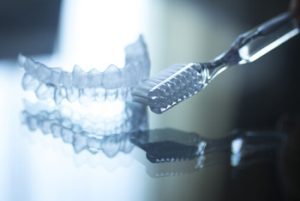Invisalign for Crowded Teeth: A Comprehensive Guide

The quest for perfect teeth is at an all-time high in a world where a more attractive smile is increasingly sought. Crowded teeth, one of the prevalent orthodontic issues, not only impact our aesthetic smile but can also give rise to dental issues like gum disease and tooth decay. In severe cases, they might even cause difficulty chewing or speech difficulties. Traditional metal braces were once the primary solution to fix crowded teeth. While effective, many patients found them visually unappealing and often self-conscious about wearing metal brackets on their upper and lower teeth.
Enter Invisalign – a breakthrough in the realm of orthodontic treatment. Unlike traditional braces, Invisalign aligners are virtually invisible, allowing patients to maintain a normal lifestyle without the self-consciousness of wearing braces. Designed specifically for each patient, the Invisalign process begins with a custom treatment plan to treat crowded teeth. These clear aligners, tailored for upper and lower teeth, gradually shift misaligned teeth into the desired position.
But can Invisalign treat severe crowding as effectively as traditional braces? Is Invisalign for crowded teeth the ideal treatment option for everyone? As we delve deeper, we’ll explore how Invisalign’s innovative dental treatment offers a solution for overcrowded teeth, gapped teeth, and other dental challenges, potentially giving many a chance to achieve that healthier smile they’ve always desired.
The Science Behind Invisalign
Invisalign has revolutionised orthodontic treatment, offering a cutting-edge alternative to traditional metal braces. But what is the science behind this transformative dental treatment? At its core, Invisalign for crowded teeth works through a series of custom-made aligners designed specifically for each patient. These aligners are virtually invisible, making them an attractive smile solution for those who are self-conscious about wearing braces.
 The cornerstone of the Invisalign treatment lies in its clear aligners. These Invisalign clear aligners are made from a patented thermoplastic material and meticulously crafted to fit over your natural teeth. Unlike traditional braces, which rely on metal brackets and wires, Invisalign aligners work by gradually shifting teeth to their desired position. Each set of aligners is worn for about two weeks before transitioning to the next set, moving the teeth incrementally until they reach the correct position. This treatment plan is customised for every patient, ensuring that issues, be it overcrowded teeth, gap teeth, or even mildly crowded, are addressed effectively.
The cornerstone of the Invisalign treatment lies in its clear aligners. These Invisalign clear aligners are made from a patented thermoplastic material and meticulously crafted to fit over your natural teeth. Unlike traditional braces, which rely on metal brackets and wires, Invisalign aligners work by gradually shifting teeth to their desired position. Each set of aligners is worn for about two weeks before transitioning to the next set, moving the teeth incrementally until they reach the correct position. This treatment plan is customised for every patient, ensuring that issues, be it overcrowded teeth, gap teeth, or even mildly crowded, are addressed effectively.
Another significant advantage is the precision of the Invisalign process. Before the treatment begins, a comprehensive 3D scan of the patient’s upper and lower teeth is taken. This allows the Invisalign provider to develop a custom treatment plan, predicting tooth movement with remarkable accuracy. The clear aligners then apply the right force at specific points, ensuring optimal results. As the treatment progresses, many patients notice significant improvements in their dental health, as the aligners make it easier to maintain good oral hygiene than traditional braces.
Choosing Invisalign means opting for a treatment option grounded in advanced technology and innovation. It is designed to treat many orthodontic issues, from crowded to gapped teeth, with fewer visits to the dentist. It allows patients to achieve a more attractive and healthier smile with realistic expectations.
Crowded Teeth: Causes and Concerns
Crowded teeth, often called dental crowding, are one of the most prevalent orthodontic issues many patients face worldwide. But what exactly causes teeth to become crowded, and what are the potential oral health risks associated with this condition?
The root causes of crowded teeth can be multifaceted. One primary reason is a discrepancy between the jaw’s size and the growth of the teeth. If the jaw has inadequate space, teeth may emerge crooked, overlapping, or twisted. Genetic factors can also play a significant role; if parents have crowded or misaligned teeth, their children are more likely to have them. Other causes include premature loss of baby teeth, insufficient space for the natural teeth to erupt correctly, or even habits like thumb-sucking, which can impact the structure and positioning of the upper and lower teeth.
The implications of crowded teeth extend beyond aesthetic concerns. Crowded teeth can be harder to clean, leading to an accumulation of food particles between the teeth. This can pave the way for tooth decay and gum disease. Moreover, misaligned teeth can result in an uneven bite, leading to difficulty chewing or even speech difficulties in severe cases. Without proper dental treatment, these conditions can exacerbate, leading to more severe dental issues and impacting overall oral health.
Many patients previously turned to traditional metal braces to correct crowded teeth. However, the advent of Invisalign treatment has offered a more aesthetically pleasing solution. Invisalign for crowded teeth works through clear aligners, which are virtually invisible and can be a preferred treatment option for those wary of the appearance and discomfort associated with traditional braces.
Invisalign vs. Traditional Braces
Pursuing a perfect smile often involves choosing between different orthodontic treatment options. The most common decision many patients face is selecting between Invisalign and traditional braces, especially when addressing issues like crowded or misaligned teeth. Both treatments have their merits, but how do they truly compare?
Traditional Braces: For decades, metal braces have been the go-to solution for various orthodontic issues. They consist of metal brackets attached to the upper and lower teeth, connected with wires, and periodically tightened to shift teeth into the desired position gradually.
Pros:
– Effective for severe crowding and complex dental issues.
– Continuous treatment without needing patient compliance in wearing or removing them.
Cons:
– Visibly noticeable, leading some patients to feel self-conscious.
– Maintenance can be challenging; food particles can get stuck easily, leading to potential tooth decay or gum disease if not cleaned properly.
– Might cause discomfort or difficulty chewing.
Invisalign: This modern dental treatment offers a more discreet approach. Invisalign for crowded teeth uses custom-made aligners, virtually invisible when worn, to treat various orthodontic issues.
Pros:
– Nearly invisible, allowing for a more aesthetic smile during treatment.
– Removable, making maintaining good oral hygiene and enjoying a normal lifestyle without dietary restrictions easier.
– Typically involves fewer visits to the dentist, saving time.
– Customised treatment plan with clear aligners tailored for individual dental needs.
Cons:
– Requires patient compliance; aligners must be worn consistently for optimal results.
– Might not be suitable for extremely severe cases or complex orthodontic issues.
While traditional braces remain effective for a broad spectrum of dental issues, Invisalign offers a more discreet and convenient option, especially for those who are self-conscious about wearing braces. The clear aligners used in the Invisalign process are designed to treat crowded teeth without visible metal brackets, making them a preferred treatment option for many. Moreover, the treatment time with Invisalign provided patient compliance can sometimes be shorter than traditional braces, offering a quicker route to that attractive smile.
The Process of Using Invisalign for Crowded Teeth
The journey to a healthier, more attractive smile using Invisalign begins with a meticulous and personalised process. Let’s delve into the steps involved in the Invisalign treatment, especially for addressing crowded teeth.
 Consultation and Initial Assessment
Consultation and Initial Assessment
The process starts with an initial consultation with an Invisalign provider. Here, the dentist assesses the severity of the crowded teeth and determines if Invisalign is the right treatment option. While it’s excellent for mild to moderate crowding, traditional braces might be recommended in some severe cases.
Impressions and Scans
Once deemed a suitable candidate for Invisalign treatment, digital scans or impressions of the upper and lower teeth are taken. These scans capture every detail, ensuring the custom-made aligners fit perfectly over the natural teeth.
Creation and Fitting of the Aligners
Utilising the scans, a series of virtually invisible Invisalign clear aligners are crafted specifically for the patient. Unlike traditional metal braces, these aligners are smooth, providing comfort while being worn.
Treatment Plan
The dentist devises a customised treatment plan that outlines the patient’s journey towards perfect teeth. This plan details how often to wear the aligners (typically 20-22 hours a day) and when to switch to the next set (usually every 1-2 weeks). The clear aligners work by gradually shifting the teeth into their desired position. Regular check-ins with the dentist ensure the treatment is on track and make any necessary adjustments.
A noteworthy advantage of the Invisalign process is its predictability. Patients can even see how their teeth will move over time, providing realistic expectations for the result. Patients need to wear the aligners consistently to ensure effective tooth movement.
While many patients choose Invisalign for its aesthetic appeal, it also promotes better oral health. The removability of the aligners means it’s easier to maintain good oral hygiene, reducing the risk of tooth decay and gum disease compared to traditional braces. Moreover, given patient compliance, the treatment time can often be shorter than that of traditional braces.
Maintenance and Care of Invisalign
Achieving optimal results from Invisalign treatment doesn’t just depend on wearing the aligners consistently; it’s also vital to ensure proper maintenance and care.
Cleaning the Aligners: Invisalign aligners must be cleaned daily to prevent bacteria buildup and keep them clear. Rinse the aligners every night and gently brush them with a soft toothbrush. Avoid using toothpaste or coloured soaps, as these can tint the aligners. Instead, opt for clear, mild soap or specialised Invisalign cleaning solutions.
Lost or Broken Aligners: If you lose or break an aligner, contacting your Invisalign provider is crucial. You might often be advised to wear the previous set or move on to the next one. However, waiting too long without wearing an aligner can affect the treatment plan and hinder the desired tooth movement.
 Tips for Optimal Results:
Tips for Optimal Results:
- Ensure you’re wearing the aligners for 20-22 hours daily.
- Remove the aligners while eating or drinking anything other than water to avoid staining.
- Maintain good oral hygiene. Brush and floss your teeth regularly to prevent tooth decay or gum disease during the Invisalign treatment.
- Store your aligners in their case when not in use to avoid loss or damage.
Benefits of Using Invisalign for Crowded Teeth
Invisalign treatment has revolutionised the world of orthodontics, providing numerous advantages over traditional braces, especially when treating crowded teeth. Here are some of the standout benefits:
Aesthetic Advantages
One of the most notable benefits of Invisalign for crowded teeth is its aesthetic appeal. The clear aligners are virtually invisible, allowing patients to undergo treatment discreetly. This is particularly beneficial for adults who might feel self-conscious wearing traditional metal braces. The journey to a more attractive smile becomes seamless and less noticeable.
Comfort and Convenience
Unlike traditional braces with metal brackets that can cause discomfort, Invisalign aligners are smooth and custom-made to fit snugly over natural teeth. They can be easily removed during meals and while brushing, allowing for a normal lifestyle without dietary restrictions or difficulty chewing.
Improved Oral Hygiene
Maintaining good oral hygiene is simpler with Invisalign. Since the aligners are removable, patients can brush and floss their teeth effectively, reducing the risk of tooth decay and gum disease. This ensures straighter teeth and a healthier smile in the long run.
Conclusion
Invisalign treatment has proven effective in correcting crowded teeth, offering a virtually invisible and comfortable alternative to traditional braces. It’s a modern solution that addresses orthodontic issues while prioritising aesthetic appeal and oral health. For those considering a transformative dental journey, we strongly recommend consulting with a dentist to explore whether Invisalign is the right choice. Ready to take the next step? Visit My Local Dentists and embark on your path to a radiant smile. Contact us at +61 2 9000 1239 to book an appointment!
References:
www.medicalnewstoday.com/articles/teeth-retainer.
www.mewing.app/blog/chewing-with-invisalign.
https://assets.ctfassets.net/y75jnaifzz4q/7niBLWjMLWLWK7LqtOhzT2/93b91508f142b1a607bd5239b865b3b5/Invisalign_Patient_IFU_207020_Rev_D_Clean.pdf
https://www.healthline.com/health/does-invisalign-work
